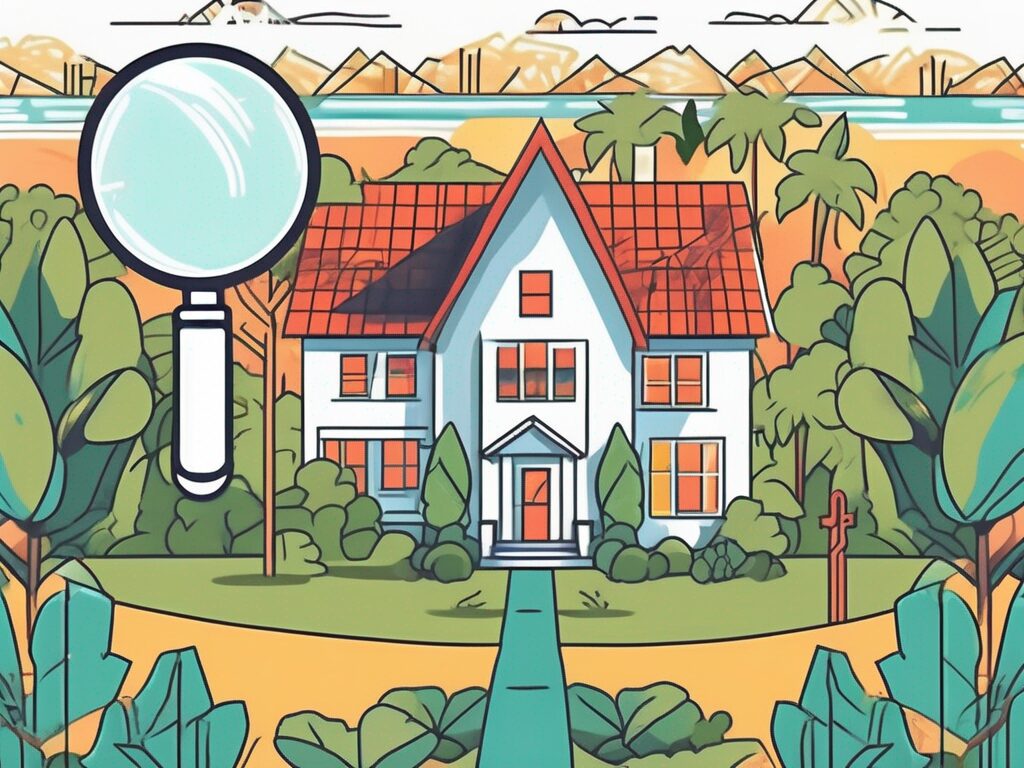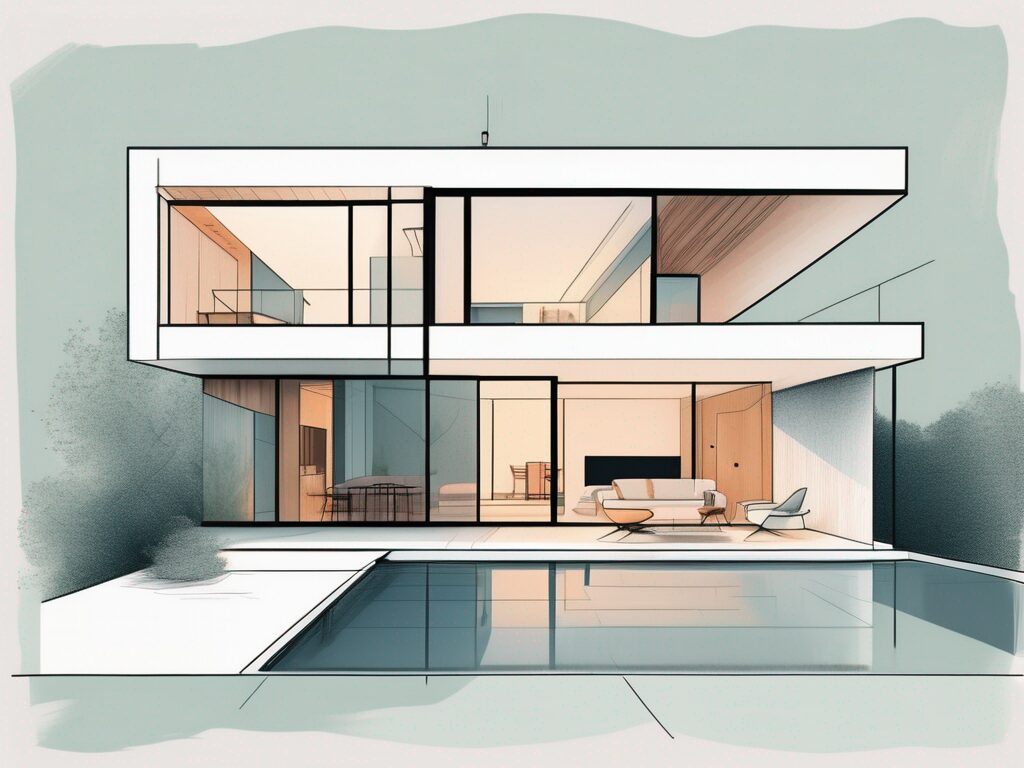
Agent A-Team or Solo Superhero? Finding the Right Real Estate Partner for Your Selling Journey in Wildwood Florida
When it comes to selling your home in Wildwood, Florida,…
January 29, 2024
A split level layout is a unique architectural design that offers distinct advantages and challenges for homeowners. Whether you are considering buying a split level home or planning to renovate an existing one, it’s essential to understand the pros and cons of this layout before making a decision. In this article, we will delve into the characteristics, origins, and key elements that define split level homes. We will also evaluate the financial implications and discuss the benefits and challenges associated with this style of living.
Split level homes are characterized by multiple half-flights of stairs that connect different levels within the house. Typically, these levels are staggered to create the appearance of distinct living spaces while maintaining an open flow. This design allows for efficient use of space, making split level homes an attractive option for families.
One of the unique characteristics of split level homes is the separation of public and private spaces. The main living areas, such as the kitchen, dining room, and living room, are often located on the upper level, while the bedrooms are situated on the lower levels. This layout provides privacy and noise isolation, especially for families with children or multiple generations living under one roof.
Additionally, split level homes often feature a basement or lower-level garage, adding extra storage space and convenience. This design is particularly beneficial for those who need additional room for hobbies, a home office, or a play area for children.
When it comes to split level homes, the possibilities for customization are endless. Homeowners can choose to add unique features such as skylights, bay windows, or even a sunken living room. These personalized touches not only enhance the overall aesthetic appeal of the home but also add to its functionality.
Another advantage of split level homes is the opportunity for outdoor living spaces. With different levels, homeowners can create multiple outdoor areas, such as a patio on the upper level for entertaining guests and a backyard on the lower level for children to play. This allows families to fully utilize their outdoor space and enjoy the benefits of nature right at their doorstep.
The split level home design gained popularity in the mid-20th century, particularly in the United States. It was a response to the need for affordable housing that could accommodate growing post-war families. Architects and builders embraced this layout, as it provided an efficient solution for maximizing usable space on smaller lots.
Over time, split level homes have evolved to incorporate modern design elements. Today, you’ll find various interpretations of the split level layout, ranging from traditional to contemporary styles. Architects continue to explore innovative ways to enhance the functionality and aesthetics of this architectural concept.
Modern split level homes often feature open floor plans, allowing for seamless transitions between different areas of the house. This creates a sense of spaciousness and promotes a feeling of togetherness among family members. Additionally, the use of large windows and glass doors in split level homes allows for abundant natural light, creating a bright and inviting atmosphere.
Furthermore, sustainability has become a key consideration in the design of split level homes. Many homeowners are opting for energy-efficient features such as solar panels, rainwater harvesting systems, and smart home technology. These eco-friendly additions not only reduce the environmental impact of the home but also help save on utility costs.
In conclusion, split level homes offer a unique and practical living experience. With their distinct levels and thoughtful design, they provide privacy, flexibility, and ample space for families to thrive. Whether you prefer a classic or contemporary style, a split level home can be customized to suit your needs and preferences, making it a truly desirable choice for homeowners.
The split level layout has its roots in early 20th-century American architecture. It was influenced by the Arts and Crafts movement, which advocated for simplicity and practicality in housing design. The idea was to create homes that were accessible, efficient, and tailored to the needs of the middle-class population.
During this time, architects sought to break away from the ornate and extravagant designs of the Victorian era. They aimed to create homes that were more functional and suited to the changing lifestyle of the American family. The split level layout was born out of this desire for practicality and adaptability.
As the demand for affordable housing increased in the post-war era, architects borrowed elements from European townhouses and adapted them to fit the American housing market. The split level design emerged as a cost-effective solution that offered flexibility in terms of layout and functionality.
One of the key features of the split level layout is the division of living spaces into different levels. This design allowed for a clear separation between public and private areas of the home. The main living areas, such as the kitchen and living room, were typically located on the middle level, while the bedrooms and bathrooms were situated on the upper and lower levels.
The split level design also provided homeowners with the opportunity to have a basement or garage without sacrificing valuable living space on the main level. This was particularly appealing to families who needed extra storage or wanted a dedicated space for hobbies and recreation.
In recent years, there has been a resurgence of interest in split level homes. Many homeowners are drawn to the unique character and potential for customization that this layout offers. Architects and designers are exploring new ways to incorporate modern features and sustainable design principles into split level homes.
Contemporary interpretations often include open floor plans, energy-efficient technologies, and smart home integration. These updates reflect the evolving needs and preferences of homeowners, making split level homes a viable option for those looking for both style and functionality.
Open floor plans have become increasingly popular in modern split level homes. By removing walls and barriers, architects create a sense of spaciousness and flow between different areas of the home. This allows for better interaction and communication between family members, as well as a more seamless transition between indoor and outdoor living spaces.
Energy-efficient technologies are also being integrated into split level homes to reduce environmental impact and lower utility costs. This includes the use of energy-efficient appliances, solar panels, and smart thermostats that can be controlled remotely. These features not only benefit the environment but also provide homeowners with long-term savings.
Smart home integration is another trend that is revolutionizing the way we live in split level homes. Home automation systems allow homeowners to control various aspects of their home, such as lighting, temperature, and security, through their smartphones or voice commands. This level of convenience and connectivity enhances the overall living experience in a split level home.
As the demand for sustainable and adaptable housing continues to grow, architects and designers will continue to push the boundaries of the split level design. With its rich history and potential for innovation, the split level home is sure to remain a popular choice for homeowners seeking a unique and functional living space.
There are several key elements that define split level homes. One of the most prominent features is the use of multiple short flights of stairs to connect the different levels. These stairs typically lead to communal areas on the upper level and private spaces on the lower levels.
Split level homes are known for their unique and functional layouts. The division of space allows for a clear separation of living areas, providing privacy and noise reduction. Each level serves a specific purpose, catering to the different needs of the residents. The mid-level often includes the main entrance and may feature a foyer or mudroom, providing a welcoming and organized entryway.
Another defining feature of split level homes is the seamless integration of indoor and outdoor spaces. The design often incorporates decks or patios off the main living areas, creating additional gathering spaces for family and friends. These outdoor areas can be transformed into cozy retreats or vibrant entertainment spaces, depending on the homeowner’s preferences.
Split level homes also offer great opportunities for customization and personalization. Homeowners can add their own unique touches to each level, creating distinct atmospheres and styles. From cozy reading nooks to home offices with panoramic views, the possibilities are endless.
When considering a split level layout, it’s helpful to explore inspiring examples of well-executed designs. One innovative approach is to incorporate large windows and skylights to maximize natural light and create a sense of spaciousness throughout the home. These architectural features not only enhance the aesthetic appeal but also contribute to energy efficiency by reducing the need for artificial lighting during the day.
Another design element that can elevate a split level home is the use of open concept living areas. By removing walls and integrating the kitchen, dining, and living areas, the home feels more modern and connected. This open layout encourages interaction and creates a sense of flow between the different spaces, making it ideal for entertaining guests or keeping an eye on children while preparing meals.
Additionally, incorporating sustainable materials and energy-efficient technologies can enhance the overall appeal of the home. This can include features such as solar panels, energy-efficient appliances, and smart home automation systems. Not only do these elements reduce the environmental impact of the home, but they also contribute to long-term cost savings for the homeowners.
Split level homes offer a variety of design possibilities and advantages. From their distinctive use of stairs to the seamless integration of indoor and outdoor spaces, these homes provide a unique living experience that caters to the needs and preferences of modern homeowners. By exploring inspiring examples and incorporating innovative design elements, split level homes can be transformed into stunning and functional spaces that truly reflect the personality and lifestyle of their residents.
One of the advantages of a split level home is its cost-effectiveness. The efficient use of space allows for a larger floor area without the need for excessive land. This can result in a lower purchase price compared to traditional single-level homes.
Furthermore, split level homes often have lower property taxes and maintenance costs due to their smaller footprint. The ability to separate living and sleeping spaces can also lead to energy savings, as you can heat or cool specific areas of the home based on your needs.
When considering the financial benefits of a split level layout, it’s important to take into account the potential for rental income. With separate levels, homeowners have the option to rent out a portion of their home, providing an additional source of revenue. This can help offset mortgage payments and contribute to long-term savings.
Another aspect to consider is the potential for increased property value. Split level homes are often sought after by buyers due to their unique design and functionality. This can result in a higher resale value compared to traditional single-level homes, providing homeowners with a potential return on their investment.
While split level homes offer numerous advantages, there are challenges to consider as well. One potential drawback is the constant presence of stairs. This can be an inconvenience for individuals with mobility issues or families with young children.
However, it’s important to note that the presence of stairs can also have its benefits. Regular stair usage can contribute to improved cardiovascular health and increased physical activity. Additionally, stairs can serve as a design feature, adding visual interest and architectural appeal to the home.
Additionally, split level homes may have limited flexibility for remodeling, as structural changes could be more complex and costly compared to single-level homes. However, with careful planning and the right professionals, it is still possible to modify the layout of a split level home to better suit your needs.
When it comes to remodeling a split level home, there are various possibilities to explore. From creating an open-concept living space by removing walls to adding additional rooms or expanding existing ones, there are numerous ways to customize the layout to fit your lifestyle.
In conclusion, a split level layout offers a range of benefits for homeowners seeking a unique and functional home design. From efficient space utilization to privacy and separation of living areas, there are many reasons why split level homes remain popular. However, it’s essential to weigh the advantages against the challenges, such as the presence of stairs and potential limitations for remodeling. By understanding the pros and cons of split level living, you can make an informed decision that is right for you and your family.

If you want the Richr team to help you save thousands on your home just book a call.
 Book a call
Book a call